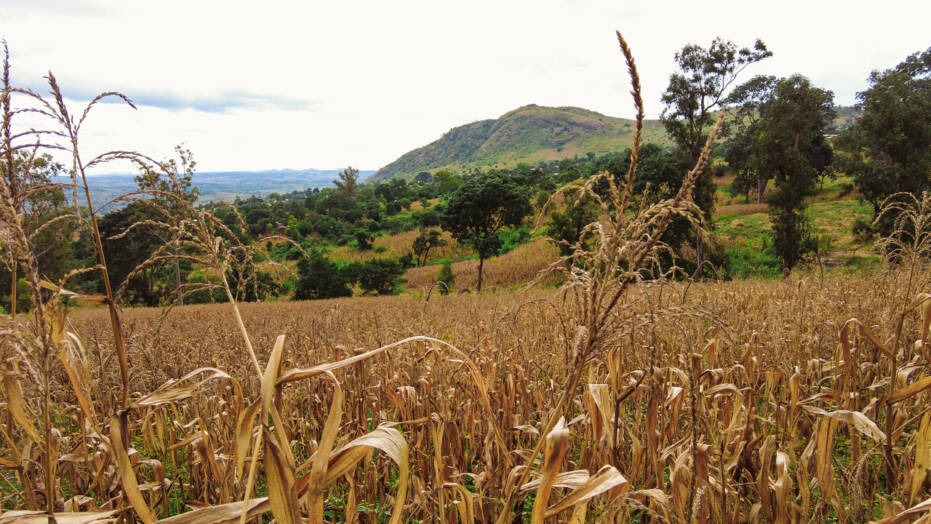Poveternostný jav El Niňo, ktorý sa má vrátiť v druhej polovici roka 2023, má posilniť účinky zmeny klímy. V indicko-pacifickom regióne budú pravdepodobne od 4. štvrťroka panovať veľké horúčavy a suchá a vplyv El Niňo na poľnohospodársky sektor sa prejaví najmä v roku 2024, keďže úroda komodít je veľmi závislá od poveternostných podmienok (horúčavy, zrážky).
Prognózy spoločnosti Coface poukazujú na veľké neistoty v prípade niektorých poľnohospodárskych komodít (obilniny, cukor, palmový olej, citrusové plody) v strednodobom horizonte a na významné riziká pre potravinovú bezpečnosť v niektorých regiónoch sveta.
Južná oscilácia El Niño je oceánsko-atmosférický jav, ktorého pôvod spočíva v abnormálnych zmenách teploty povrchovej vody v strednom a východnom Tichomorí (pobrežie Latinskej Ameriky). Pozostáva z dvoch protichodných javov (La Niña a El Niño), ktoré sa historicky vyskytujú každé 2 až 3 roky. La Niña prináša chladnejšie a vlhšie počasie, zatiaľ čo El Niño prináša teplejšie a suchšie počasie.
Prebiehajúci El Niño sa vyskytuje menej ako rok po poslednej epizóde La Niña, teda oveľa rýchlejšie, než je historická frekvencia. To naznačuje zvýšenie frekvencie tohto typu poveternostných javov, ktoré môžu mať z dlhodobého hľadiska škodlivé následky. Poruchy počasia El Niño, ktoré ovplyvňujú celú indo-pacifickú oblasť, totiž vedú k vlnám horúčav a suchám. El Niño tak má tendenciu zosilňovať negatívne účinky klimatických zmien v Ázii a Tichomorí, južnej a východnej Afrike a v Amerike. Európa, Blízky východ a severná Afrika sú tohto javu ušetrené.
Key regions for global agriculture and agri-food value chains under pressure
Brazil (the world’s leading producer of sugar cane, soya, coffee and oranges), India (world #2 producer of rice, wheat, sugar cane and potatoes), Indonesia (#1 producer of palm oil, #3 producer of rice) and Australia (world #4 producer of barley and rapeseed) are likely to be particularly exposed, and will see their agricultural yields fall.
Poorer harvests will put pressure on agri-food value chains as a whole, and 2024 is likely to be a year of extreme tension between supply and demand for the sector. Indeed, disruptions will have a negative impact on the production of both the major exporting countries (Australia, Brazil, US) and the demographically hot spots that are supposed to be self-sufficient in food (China, India). The pressure on supplies will therefore be twofold.
Unsurprisingly, food prices are set to rise in 2024. The example of South-East Asia is a relevant illustration of this. Various El Niño episodes in the last 20 years have generally led to inflationary pressures on food prices in the region. Rice, which accounts for 60% of domestic cereal consumption in the region, is very vulnerable to the effects of El Niño, while its water-intensive crop is likely to suffer from low levels of rainfall. Furthermore, the weight of food in regional consumer price indices is significant (around 40%), raising fears of a surge in inflation in the medium term.
Supply difficulties and rising food prices increase the risk of social & political instability in emerging economies.
Countries where the agricultural sector is predominant could suffer significant losses of income and employment. For instance, Indonesia, where agriculture accounts for 13% of GDP and 32% of jobs, could be hit hard by the negative impact of El Niño on rice and palm oil production. In the medium term, the country faces major political deadlines: the next general Indonesian elections (presidential, legislative and senatorial) are scheduled o, February 2024. The economic difficulties caused by the uncertain weather conditions could therefore have a major impact on the country's stability.
On the other hand, exporting countries less affected by weather disruptions could benefit from higher prices of agricultural commodities.

